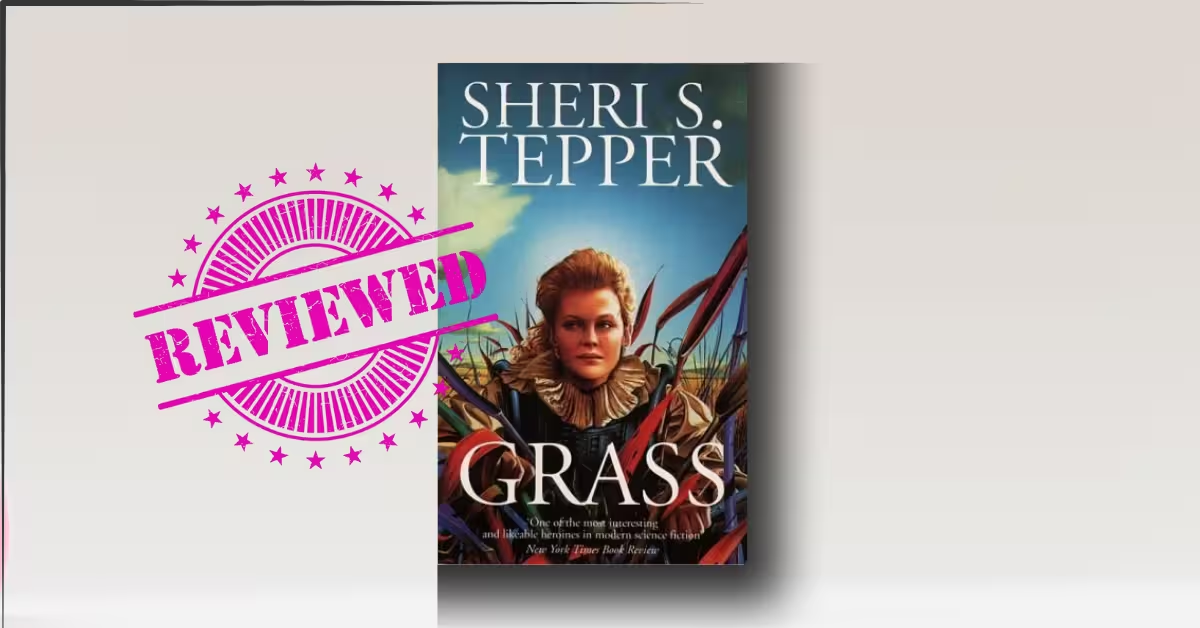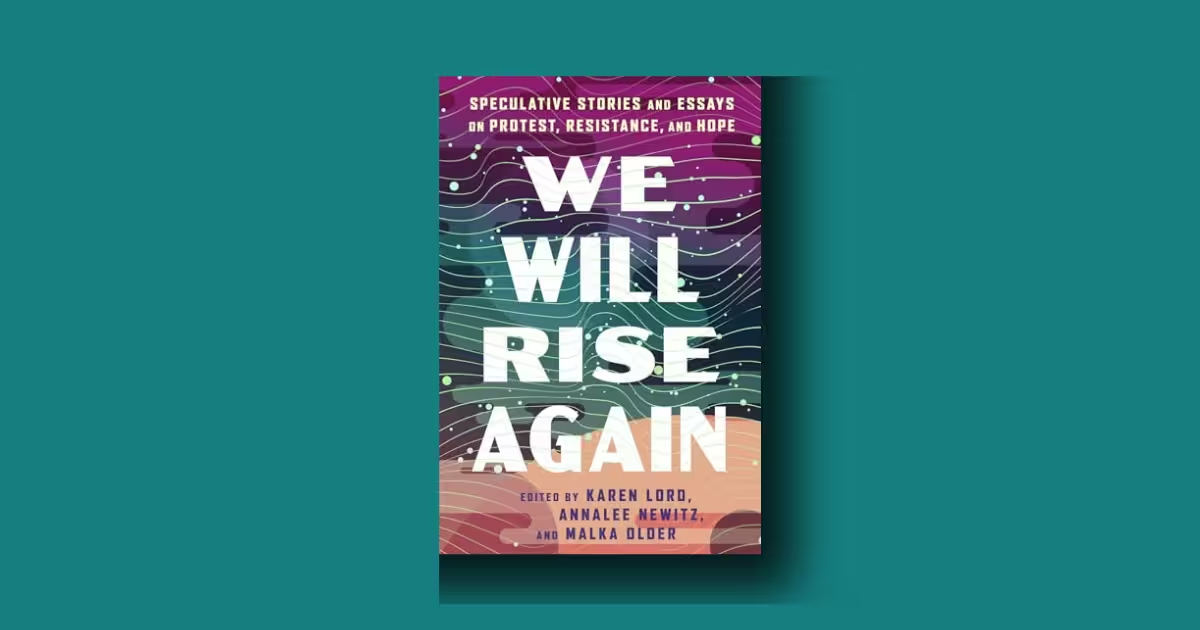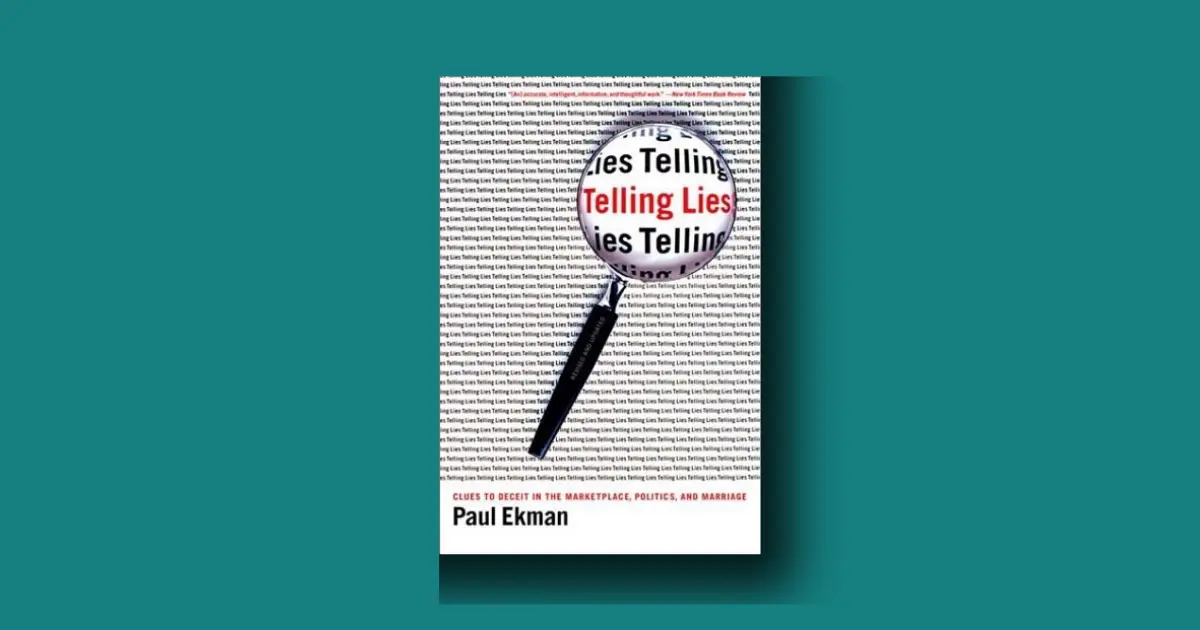You think you know what a “hunting novel” is—until the prey isn’t the point, the hunters aren’t in charge, and the land itself is the real protagonist. Grass solves the modern reader’s problem of “empty spectacle” by revealing how sport, class, faith, and ecology braid into a single, unsettling system that uses people as surely as people use animals.
Sheri S. Tepper’s Grass is a fiercely intelligent eco-mystery in which a quarantined, color-drenched planet hides the biological and social secret to a species-killing plague—forcing a diplomat’s family to unlearn power, unmask religion, and see that “all flesh is grass.”
First lines that frame the book’s thesis—“A voice says, ‘Cry!’… ‘All flesh is grass’”—anchor Tepper’s worldbuilding; the very next breath floods our sight with “millions of square miles… numberless wind-whipped tsunamis of grass,” a prose-poem that doubles as ecological data and social map.
Tepper’s “messagey” 1980s SF has aged into relevance (New Scientist recently recommended Grass for its “enjoyably disturbing” hunt and superb world-building), and the novel’s award record shows sustained critical esteem (Hugo & Locus nominations; later selection for SF Masterworks).
The book is best for readers who love eco-feminist science fiction, social-systems puzzles, and planetary SF with teeth; not for readers who want cozy colonization tales, gore-free hunts, or neat, unambiguous villains (on Grass, the ecosystem—and the aristocracy—complicate everything).
Table of Contents
Introduction
Grass (1989) is the first novel in Sheri S. Tepper’s Arbai trilogy, published by Doubleday and later canonized as a SF Masterworks edition; it’s frequently cited as one of Tepper’s defining eco-feminist works.
I met this book not as an escape but as a challenge: it opens with scripture and rolls straight into topography, color theory, and class satire, announcing that the landscape will not be a backdrop—it is the plot.
And from the first hunt, where the aristocracy’s ritualized desire fuses with blood sport, you realize Tepper has built a system that preys upon its own believers.
1. Background
Tepper (1929–2016) wrote across genres but is best known for feminist/eco-humanist science fiction; her career included public-health leadership and later a World Fantasy Life Achievement Award, context that matters when a novel dissects institutions—faith, medicine, governance.
Historically, Grass arrived at the Cold-War sunset and the “green turn” in SF, synthesizing environmental anxieties and gender politics into a planetary mystery; critics place it alongside late-20th-century eco-SF that reframed colonization as a moral and biological negotiation.
It was nominated for both the Hugo and Locus awards (1990), and its long afterlife—reissues, scholarship, and mainstream press recommendations—speaks to its stubborn modernity.
2. Grass Summary
The story opens with a warning and an anthem. Scripture whispers, “All flesh is grass,” and then the camera lifts to show “millions of square miles… numberless wind-whipped tsunamis of grass” in every hue—emerald to wine-red—along with walled villages that keep the grass at bay like a living sea.
Humanity is dying elsewhere of a plague; inexplicably, the people of Grass appear immune. Into this world comes an ambassadorial family from Sanctity (Terra’s theocratic successor): Roderigo (Rigo) Yrarier, his wife Marjorie, Lady Westriding, and their children Tony and Stella, dispatched to learn Grass’s secret immunity. Their introduction to the bons (aristocrats) is equal parts pageant and frost; even the vehicles ooze baroque pretension, “mechanical devices trying to look like… lawn statuary,” ferrying the family past Crimson Ridge and Sable Hills toward the social heart: the Hunt.
Grass itself is bifurcated: Commons/Port—a transshipment economy embedded in swamp-forest where “roads” are tolerated because there is no grass to destroy—and the vast estancias of the bons, who forbid aerial tours and keep their rituals opaque. Commerce hums; Grass lies at a “topological crossroads” of qua-space, busy beyond what the local population would justify, and Commons quietly knows more—and earns more—than the bons concede.
The Hunt is the axis: aristocrats ride Hippae (not-horses with three sharp hooves and arsenal-like spines) while packs of “hounds” and smaller “peepers” swarm; prey is the foxen who can climb trees and vanish into the Dark Forest. From a balloon-car, Marjorie watches a bons’ hunt—a choreography of ecstasy, violence, and social anesthesia.
Inside the ritual lies an unspeakable core. In one early hunt, a fox is harpooned and dragged from a tree; “there is only the sound of screaming mixed with the sound of teeth,” and Dimity bon Damfels experiences an involuntary, eroticized surge at the kill—a revelation of how the Hunt rewires bodies and ethics.
Marjorie, observant and stubbornly moral, begins to pick the lock. She notes that summers bring grass fires like “great waves” and learns from the Green Brothers (penitents turned gardeners/engineers) that the famed Grass Gardens are not mere ornaments: they are firebreaks designed to save lives and houses. Beneath decorum, Grass is engineered survival.
As disappearances mount in Commons—“fifty or so” last fall, Asmir the clerk reports—Marjorie suspects the plague is already here but misnamed, hidden by the terrain and by power’s willful blindness. People “get lost in the grass,” or the swamp swallows them. Rigo orders a quiet census; the bons’ code of silence persists.
Rigo and Stella, accomplished riders, are lured into hippae simulacra and then into real Hunts. The simulators are seduction machines: “winter liaisons sunder in spring,” Commoners say—another way of admitting how the Hunt season shreds marriages and bends will.
Dimity vanishes into the grass’s green-and-blue labyrinth; Stella’s entanglement deepens. Marjorie, allied with Brother Mainoa (a kind priest who sees more than Doctrine allows) and local doctor Lees Bergrem, begins to assemble the biological puzzle: on Grass, a core nutrient exists in two mirror forms. What if something on Grass “turned around an essential nutrient… something we couldn’t use in a reversed form”? The plague’s immunity might be biochemical—and planetary.
In the ruins and the treetops, foxen become persons. Mainoa explains a lost metamorphosis: “Hippae metamorphose into foxen… All once did… and at that time it was the foxen who laid the eggs.” The Hippae’s limited but coercive telepathy shapes Huntsmen and laborers (the migerers), and when Hippae change into foxen that mental force multiplies “a hundredfold.” The system is biological and ideological.
Piece by piece, a deep history surfaces: The pre-human Arbai died everywhere; Hippae memorialized the event in dances (“Fun to kill strangers”), then rehearsed that pattern with humans by tunneling “dead bats” (vectors) into ports—a perfect epidemiology of ritual and replication.
Commons erupts into street-to-street battle as Hippae breach the forest-tunnel network; foxen fight invisibly alongside humans, and “one by one the remaining Hippae were found and killed,” while Lees and Marjorie race the clock in a makeshift lab. Meanwhile, the theocracy’s leaders angle to control the cure, or bury it.
In the endgame, letters carry truth off-world; some ships never reach harbor; Sanctity falls into chaos. Marjorie writes the book’s quiet manifesto—humility before scale: “Where was the beekeeper who labeled his bees?… Compared to the size of creation, what were we but very small beings… Very small beings are important, not individually but for what they become.” And then she chooses risk: “there must still be a first shoot set out to make a garden.”
3. Grass Analysis
3.1 Grass Characters
Marjorie Westriding is the novel’s conscience and vector of change—curious, devout, and pragmatic. She reads landscapes as if they were texts, resists the erotic anesthesia of the Hunt, and out-thinks ideologues. When approached by the ardent Sylvan, she replies with unglamorous clarity: “They help me guard myself!”—religion, for her, is a discipline against power, not an instrument of it.
Roderigo Yrarier (Rigo) is a study in institutional competence—shrewd, stoic, but slow to accept that no bon will help him find his daughter; he must drop diplomacy and speak human. His shiver at the thought of cultures that “lose their children and pretend not to notice” is the moral crack that lets light in.
Brother Mainoa is the novel’s ordinary saint—perceptive enough to see metamorphosis (Hippae → foxen) and honest enough to act on it; he is the arguer for becoming (Tepper’s keyword). When he says, “All once did,” he names the tragedy of stagnation.
Dimity, Rowena, and the Haunsers embody aristocracy’s bargain: beauty, ritual, and denial. Dimity’s moment of coerced ecstasy during the kill is the book’s most uncomfortable moral mirror—it shows how systems teach bodies to feel wrong.
Stella, half-feral, resists Terran pieties and becomes the bridge to foxen and to Rillibee Chime, the Brother who climbs towers and kisses her into a future that is simultaneously fragile and new.
3.3 Grass Themes and Symbolism
Hunt as social system. The hunt isn’t sport; it’s a pedagogy in obedience. The Hippae’s low-level compulsion syncs with class ritual to normalize disappearance (of children, dissenters, inconvenient truths). The balloon-car vantage literally lifts the reader into the surveillance gaze, exposing how the ritual edits what you’re allowed to see.
Metamorphosis & arrested becoming. Hippae once became foxen—now many don’t. Evolution is stalled by convenience. Tepper’s ecosystem warns: when a species, a polity, or a church makes comfort its god, it forgets how to change. “Very small beings are important… for what they become.”
Faith vs. Sanctity. Characters of faith (Marjorie, Mainoa, Father James) protect the living; Sanctity, the institution, protects itself—intercepting letters, plotting to suppress cures, and confusing authority with holiness. The book’s quiet fury is most evident when Mainoa says of the Hierarch: “someone unworthy of any faith.”
Color & garden symbolism. Named grasses—Cloak of Kings—and terraces that “bloom” without flowers invert Eden: on Grass, gardens are defenses (firebreaks) and languages (status, season, mood). The bons speak Grassan, a ponderous private code; the land speaks in prairies, ridges, and fire.
Biochemistry as ethics. The plague mystery hinges on chirality—an essential nutrient that exists in two forms “only here.” This is classic Tepper: a scientific hinge that opens an ethical door. Who gets to control the cure? Who decides what knowledge is “acceptable doctrine”?
4. Evaluation
Strengths / pleasant surprises. The opening set-piece is among the best planet intros in SF, a synesthetic map that doubles as a class critique: “Sapphire seas of grass with dark islands… Interminable meadows of silver hay… the great grazing beasts move… leaving stubble… to spring up again.” The prose carries the weight of world-building and the rhythm of prayer.
Weaknesses / rough edges. The novel’s heart is Marjorie; when the camera lingers elsewhere (certain bons’ intrigues), pacing can tangle. The shock of the Hunt’s eroticization, while thematically necessary, may feel blunt to some readers—precisely because it indicts not just characters but readers’ thrill-seeking.
Impact. I closed the book chastened and hopeful. Chastened, because Tepper insists we are as small as bees and as consequential as bread—we matter if we become. Hopeful, because the solution isn’t heroism but humility, cooperation (with foxen, with gardeners, with stubborn doctors), and the audacity to plant the “first shoot.”
Comparison with similar works. File Grass near Le Guin’s The Word for World is Forest (ecology as politics) and Joan D. Vinge’s The Snow Queen (ritual, gender, planet-economy); it also speaks to Butler’s Xenogenesis in its insistence that contact changes both sides. What sets Tepper apart is the fusion of garden craft and biochemistry as social allegory.
5. Personal Insight & Contemporary Educational Relevance
I read Grass today as a planetary-health case study. A post-pandemic culture recognizes the book’s sober lesson: epidemics are systems, not events. Universities teaching One Health could teach this text alongside journal articles on zoonosis and molecular chirality. In class you’d stage a debate: gardeners (resilience engineering) vs. hunters (ritual power)—who protects public safety?
For a concrete contemporary angle: pair Grass with discussions of climate-risk adaptation and managed retreat. In Bangladesh, coastal erosion and community-scale interventions illustrate how landscapes demand design, not denial (see reporting on coastal erosion that tracks the local-global interface).
And for literary culture: New Scientist’s 2025 staff pick frames Grass as still “enjoyably disturbing”—an ideal entry point for STEM students crossing into SF studies.
6. Grass Quotes
“A voice says, ‘Cry!’… ‘All flesh is grass.’”
“Grass! Millions of square miles of it; numberless wind-whipped tsunamis of grass, a thousand sun-lulled Caribbeans of grass…”
“They cast an opalescent glow… to see the ghosts as they walked in and out.” (the foxen’s haunting threshold)
“Hippae metamorphose into foxen… All once did… and at that time, it was the foxen who laid the eggs.”
“It’s quite believable… Hippae have enough to affect the minds of those around them and bend those minds to their purposes.”
“[On Grass] it exists in two forms… What if something here turned around an essential nutrient?”
“There is only the sound of screaming mixed with the sound of teeth… [and] a spasm of ecstatic sensation.”
“Compared to the size of creation, what were we but very small beings… Very small beings are important, not individually but for what they become.”
“…there must still be a first shoot set out to make a garden.”
7. Conclusion
Overall impression. Grass by Sheri S. Tepper is a rare combination of lush planetary SF, biological mystery, and moral argument. It satisfies the adventure reader even as it argues with the adventure’s premise.
Recommendation. Read it if you crave world-building that matters; if you appreciate fiction that threads ecology, gender, and faith into a single system; if you’re curious how a people can be immune to a plague and still not be safe. It’s indispensable for fans of eco-feminist science fiction, Le Guin, Butler, and Vinge—and for anyone who has ever wondered whether a garden can be a manifesto.
Why it’s significant. Because it insists we are as responsible for our systems as we are for our choices—and because it offers a grammar of hope: become, change, plant the first shoot, and mean it.
Related



